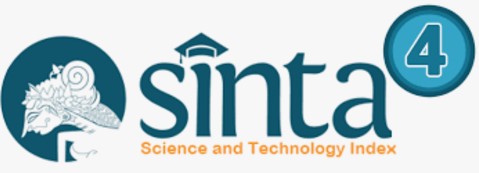ANALISIS KINERJA KEUANGAN PERBANKAN SYARIAH (STUDI EMPIRIS BANK SYARIAH ’’ BADAN USAHA MILIK NEGARA ’’ DI INDONESIA PERIODE 2015-2018)’’
DOI:
https://doi.org/10.36085/jam-ekis.v3i1.541Abstract
This research is based on the importance of Islamic bank financial performance. Islamic bank financial performance is a picture of the achievements of banks in their operations, both related to the aspects of finance, marketing, collection and distribution of funds, technology, and human resources. This study aims to determine the financial performance of Islamic banking in Indonesia. Performance measurement tools that can be used based on financial statements is to calculate financial ratios so that they can find out the performance using ratio analysis. This research uses a quantitative approach to observe, gather information and present an analysis of research results. The population in this study is state-owned Islamic banks in Indonesia for the period 2015-2018. The sampling technique used was purposive sampling. The number of banks sampled were three Islamic banks. The analytical methods used in this study are Loan to Defosit Ratio (LDR), Capital Adequacy Ratio (CAR), Return on Assets (ROA), Return on Equity (ROE) and Operational Costs Against Operational Income (BOPO). The results of this study obtained the ratio of LDR, CAR and BOPO in Islamic banking financial performance on average have good criteria. While the ROA and ROE ratio of Islamic banking has an average that is not good, for that ratio Return On Assets must be improved, especially in the aspect of managing assets to generate net profit. Likewise, the Return On Equity ratio can have the ability of equity in generating profits and utilizing owned capital capable of generating profits.
Â
Keywords: LDR, ROA, CAR, ROE dan BOPOÂ Â Â Â Â Â Â Â Â Â Â Â Â Â Â Â Â Â Â Â Â Â Â Â Â Â Â Â Â Â Â Â Â Â Â Â Â Â
               Â
References
Asma, Salman & Huma Nawaz (2018), “Islamic finansial system and conventional bangking: A comparisonâ€. Arab Economic abd Business Journal 155-167
Badri, Raba &Bouljebene Younes (2016) “The Impact Of The Islamic Banks Performance On Economic Growth:Using Panel Dataâ€, International Journal Of Economics and Dinance Studies, Vol8,No 1, ISSN: 1309-8055(online)
Bank Indonesia. 1998. UU No. 10 tahun 1998, Tentang perubahan terhadap UU No. 7 tahun 1992, Jakarta.
Fahmi, Irham (2012) Analisis Kinerja Keuangan, Alfabeta, Bandung.
Kasmir. 2015. Bank dan Lembaga Keuangan Lainnya. Jakarta. PT Raja Grafindo Persada.
Kevin W, Gero V, Srilal M (2009). Investing with confidence: Understanding political risk management in the 21 century, 1 ed., World Bank publication, Washington DC.
Hamidah, Ramlan & Mohd Sharrizat Adnan (2016), “The Profitability of Islamic and Conventional Bank: Case Study in Malaysaâ€. Globsal journal of International Economics & Business Management Conference.
Husnan, Suad., Enny Pudjiastuti, 2006. Dasar – dasar Manajemen Keuangan. UPP AMP YKPN. Yogyakarta.
Martono, 2013, Bank dan Lembaga Keuangan Lainnya, Yogyakarta : Ekonisia Kampus Fakultas Ekonomi UII
Onakoya, Adegbemi Babatunde, (2013) , “The Performance of Conventional and Islamic Banks in the United Kingdom : A Comparative Analysisâ€. Journal of Research in Economics and International Finance (JREIF) (ISSN:2315-5671) Vol.2(2) pp 29-30
Riyadi, 2016. Analisis Kinerja Keuangan dan Perencanaan Keuangan
Perusahaan. Jakarta: PT Gramedia Pustaka Utama.
Sugiyono, 2013. Metode Penelitian Kunatitatif Kualitatif dan R&D. Cetakan Ke-18 . Bandung Alfabeta.
Undang-undang Republik Indonesia nomor 21 tahun 2008 Tentang Perbankan Syariah.
Wild, 2010. Analisis Laporan Keuangan, Buku. Satu, Edisi Sepuluh, Salemba Empat, Jakarta.







